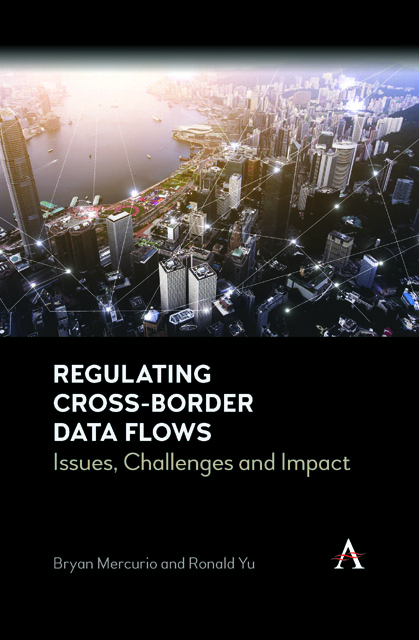1 - Introduction
Published online by Cambridge University Press: 22 November 2022
Summary
Laws, regulations and policies are important to the flow of data across borders since they create the certainty that enables the smooth conduct of business; in today's fast-paced world, certainty is a valuable commodity. But laws, regulations and policies alone are not sufficient and could be counterproductive. In order to formulate a proper policy on the management of cross-border data – or arguments why a laissez-faire approach may be preferable to an articulated policy framework – governments must understand the nature of data and data flows today. Towards this end, this chapter provides necessary background by exploring the concurrent developments of the explosive growth in data volume, applications for the use of data and the drivers behind these trends.
The Growth (and Growing Importance) of Data
Data is now one of the world's most valuable resources (The Economist, 2017). In today's digitally transformed world where over 2.5 quintillion bytes of data are generated every day, flow of knowledge and technology lies at the centre of new networks driving production and innovation (Holst, 2021). The increasing use of internet of things (IoT) and the growing amount of data generated and flowing across borders are driving substantial opportunities. This is not surprising as more companies are turning into ‘datavores’, making strong use of data and analysis for decision-making and increasingly big data and artificial intelligence (AI) for a range of initiatives and business operations (Bridges, 2015; Bilodeau, 2019).
Unlike conventional assets, data is non-rivalrous – multiple parties can use the same data concurrently without it being used up and data often gains its value from being combined with other data (Coyle et al., 2021) This makes crossborder data flows – which refers to the movement or transfer of information between computer servers across borders – even more important. Cross-border data flows enable people to easily transmit information for online communication, track global supply chains, share research, combine data, provide cross-border services and support technological innovation (Congressional Reporting Service, 2020). Over the past decade, cross-border data flows have increased global gross domestic product (GDP) by 10.1 per cent (Manyika et al., 2016, 10, 76), and by 2018 data flows had already accounted for US$2.8 trillion of global GDP, surpassing the global trade in goods (GSMA, 2018).
- Type
- Chapter
- Information
- Regulating Cross-Border Data FlowsIssues, Challenges and Impact, pp. 1 - 8Publisher: Anthem PressPrint publication year: 2022

